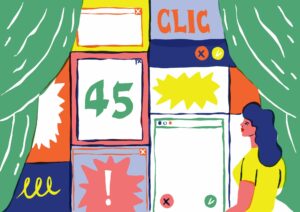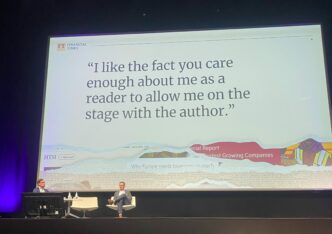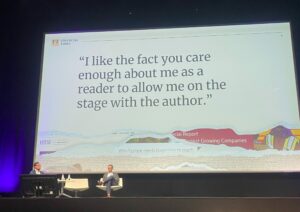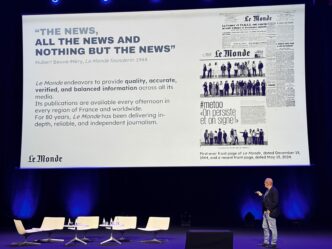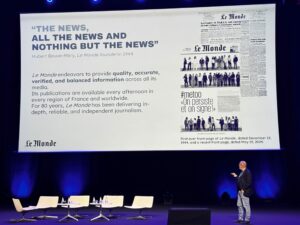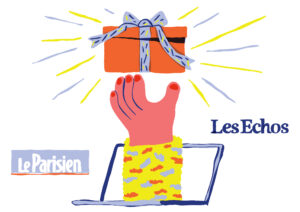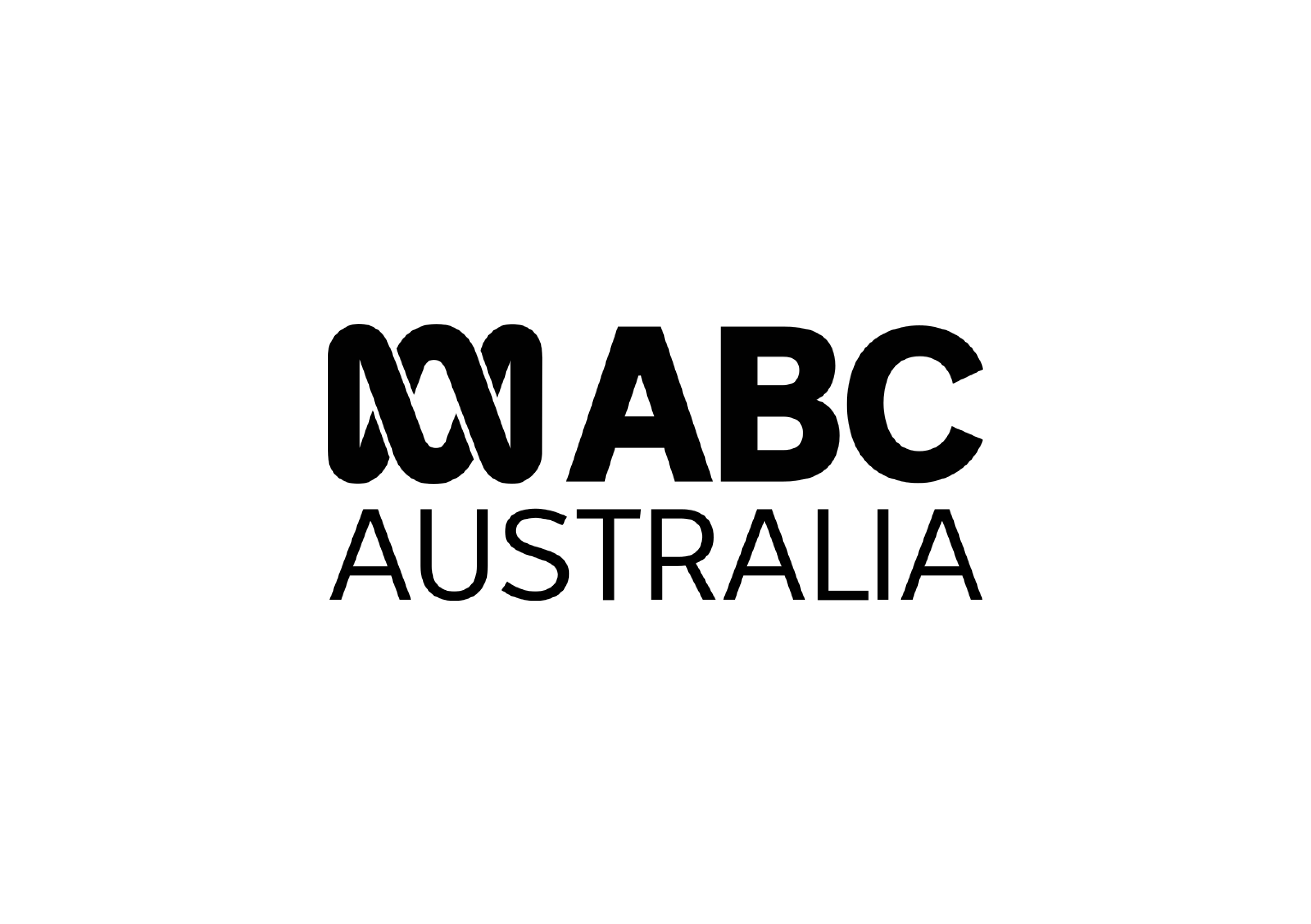

Chloe is the Audience Strategist for the Australian Broadcast Corporation's (ABC) Innovation Lab. She focuses on cultivating and deepening the ABC’s relationship with new audiences. In times past, she was responsible for the audience and engagement strategies for several major news organizations, such as Guardian Australia, SBS, The Times of London, and The Sunday Times.
Could you start by telling us about your experience and how you came to take on this role?
I’ve spent my entire career working in digital and social and found that I kept coming back to looking at ways in which we can better use audience data to inform (not dictate) content choices. That’s really been the backbone of my career and has breadcrumbed to this role at the Australian Broadcast Corporation’s Innovation Lab.
These days, I’m using data not just to react to audience needs but to proactively plan on how to reach and engage them in the future. The core of Innovation Lab’s mission is constant evolution and testing out new things. It’s shedding what doesn’t work and changing tact. At the ABC, every decision we make, and every move we take, revolves around our audience. They’re not just a part of the process; they’re at the very heart of everything we do. And I’m so thankful that I’m in a role that makes them my full-time focus.
What is audience innovation and strategy?
Good question. In short, it involves seeking new and unique ways to reach people, rather than relying on traditional methods.
The long version is: I research the audiences that the ABC is currently underserving and look for any potential areas for growth. I‘ll use this research plus audience data and behavioral habits to pitch strategies for conversion, engagement, or discovery. I then roll up my sleeves and get to work on testing theories and strategies quickly before deciding whether teams should proceed with implementing any successful pilots into their BAU.
The great thing about the Innovation Lab is that we’re never just doing one thing and repeating it—we’re constantly testing new content formats, figuring out where our audience is, and what it is that makes them stick.
How does ABC decide what audience segments to research, and how are projects prioritized?
It is in the ABC’s charter to reach, serve and reflect the cultural diversity of all Australians. For this reason, I funnel all my research efforts into the audience segments that are underserved or in decline. My projects are prioritized on potential. For me, it’s all about the reach. When picking a project, the things I like to ask myself are: Can we serve a new audience in this place? Can we reach people that are different from the audience we already have? Or can we tell stories and share information in a way we’re not doing already? If the answer to these is yes, then it’s a green light!
> Audience research at The Atlantic, the questions that data can’t answer
What is one audience innovation initiative that ABC has undertaken recently?
I recently ran a TikTok Incubator which looked at how the ABC could efficiently and strategically produce content for younger audiences on the platform. The project started with the creation of a master brand account (@abc) in May 2022.
This account was a sandpit for teams to test content, formats, and production styles with younger audiences without committing to the huge undertaking that goes with building an audience and setting up an account from scratch.
Teams were encouraged to be experimental on the account. If the content didn’t land, we would quickly pivot and move on to testing the next thing. If it was successful, we’d stop to look at why and if it made sense, integrate it into the broader account strategy. Content verticals that proved popular with audiences time and time again eventually became spin-off accounts.
But this is just one of the many weird and wonderful projects the team at the Innovation Lab executes. If you’re interested, you can check out other projects here.
Are there any unique or unconventional methods the ABC has employed to reach out to niche or hard-to-reach audiences?
The most unique thing I’ve worked on is using QR codes to convert real-world audiences into digital ones.
For Sydney World Pride, the team created a web interactive that re-traced the route of the first Mardi Gras parade in 1978. The project I led looked at using QR codes to distribute this piece of content seeing as we could link the locations from the story to their real-world counterparts. When someone scanned one of our QR code decals on the street, they were directed to a video on the queer history behind that location and a link to the web interactive. This is how we managed to turn audiences in real life into digital ones.
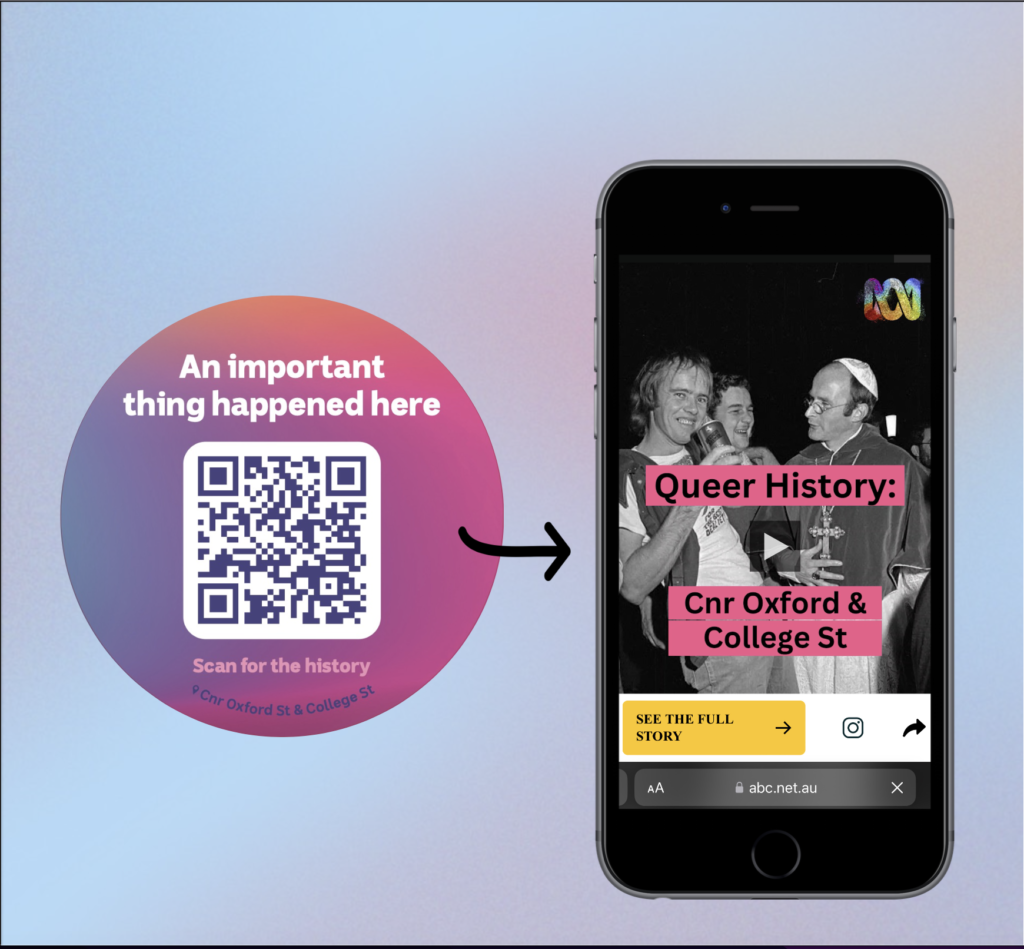
My main goal with the QR code project was not to achieve a high reach but to foster meaningful engagement with a specific community. We knew there were going to be thousands of people in these areas for World Pride however we wanted to ensure we were putting this content in front of the audience for whom it mattered the most. And we saw results — visitors who accessed the World Pride interactive through the QR codes had a notably longer time spent on site compared to all other visitors.
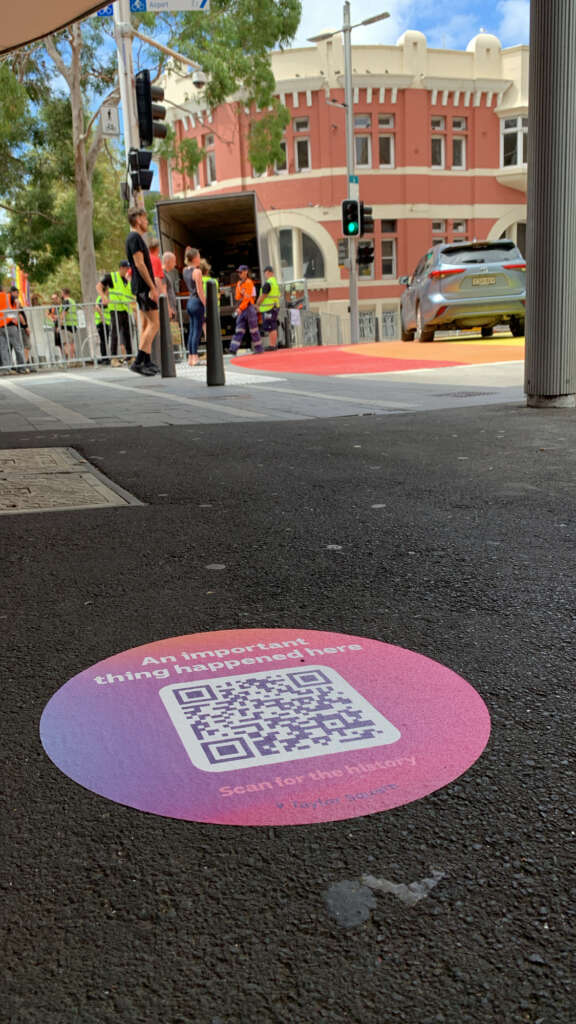
With the evolving media landscape, how does ABC foresee the future of audience engagement? Are there emerging trends or technologies that you believe will shape the way audiences interact with media organizations?
I think personalisation, AI and machine learning will have a huge impact on the expectations audiences have around both content and media organisations.
There will be a shift from followers towards “for you pages” as media organisations begin to make content for people who don’t follow them or who don’t even know who they are. Social media will continue to be a vital platform but at the ABC, we’re also exploring newer platforms that resonate with younger demographics. The key thing for us when it comes to emerging platforms is to start testing early.
But the future moves quickly! We’re not going to be doing the same thing that we’re doing now, next year and even the year after that. And I’m not sure if that’s exciting or just terrifying at this point.
How does ABC measure the success of its audience innovation initiatives? Are there specific metrics or indicators that are considered particularly important in evaluating engagement strategies?
We try to measure quantity and quality in tandem which results in a cocktail of metrics to determine what is success. What we consider as wins will vary from project to project and also depend on the objective of each pilot too. With the TikTok Incubator project, we considered not only traditional KPIs like views and engagement metrics but also looked at more nuanced aspects like whether teams tested new content formats beyond their usual scope or which approaches had transitioned into business as usual for content teams.
At the ABC, we do place real emphasis on engagement indicators. We also factor in things like whether we reached an audience we hadn’t touched before or whether we tried something completely out of the box to engage them. Size isn’t always important. Ultimately, the impact on our audience, in terms of resonance, trust and meaningful discussion, is the most significant measure of success for the ABC.


